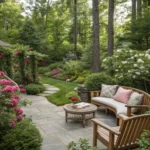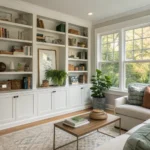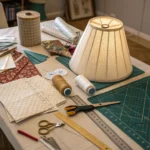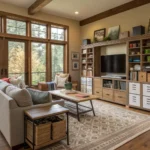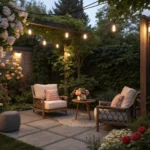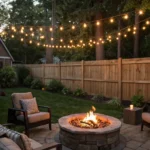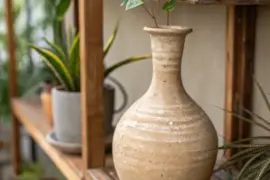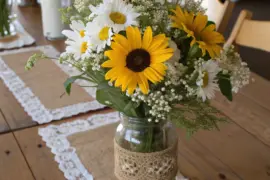Poetry and design share a fundamental truth: both transform raw elements into experiences that speak directly to the soul. When we approach our living spaces with a poet’s sensibility, we discover that every room can become a verse, every garden a stanza, and every design choice a carefully chosen word that contributes to the greater narrative of home.
Understanding the Poetry of Space

The Language of Design Metaphors
Just as poets use metaphor to express the inexpressible, designers employ visual metaphors to create emotional connections between people and their environments. A room can become a sanctuary, a castle, or a retreat—each metaphor fundamentally changing how we interact with and feel within that space.
Metaphors in design work by:
- Creating emotional attachment through familiar concepts translated into spatial form
- Providing coherent structure that highlights certain elements while softening others
- Enabling meaningful experiences that go beyond mere aesthetics
Consider how different metaphorical approaches transform the same space:
| Metaphor | Key Elements | Emotional Impact | Design Applications |
|---|---|---|---|
| Sanctuary | Soft textures, warm lighting, enclosed spaces | Peace, security, contemplation | Reading nooks, meditation corners, spa bathrooms |
| Gallery | Clean lines, focused lighting, curated displays | Inspiration, sophistication, appreciation | Living rooms, hallways, dining spaces |
| Garden Retreat | Natural materials, organic shapes, plant integration | Renewal, connection, growth | Sunrooms, outdoor spaces, kitchens |
The Architecture of Mood

Creating atmosphere through design requires understanding how environmental elements influence our emotional states. Research in environmental psychology demonstrates that our surroundings directly impact mood, productivity, and overall well-being.
The fundamental elements that shape atmospheric poetry include:
Color as Emotional Language
– Warm tones (reds, oranges, yellows) energize and stimulate social interaction
– Cool tones (blues, greens, purples) promote calm and introspective states
– Neutral palettes provide versatile canvases that allow other elements to shine
Texture as Tactile Verse
– Soft textures (velvet, silk, cashmere) create intimacy and comfort
– Natural textures (wood, stone, linen) ground spaces in authenticity
– Contrasting textures add visual interest and sensory depth
Light as Rhythmic Flow
Lighting functions as the meter of spatial poetry, creating rhythm and emphasis throughout your environment. Effective atmospheric lighting employs:
- Layered illumination with ambient, task, and accent sources
- Warm lighting (2700K-3000K) for intimate, cozy atmospheres
- Cool lighting (4000K+) for energizing, productive environments
- Adjustable intensity to adapt mood throughout the day
Crafting Your Poetic Design Vocabulary
Establishing Your Emotional Palette
Before selecting furniture or paint colors, identify the emotional qualities you want each space to embody. I’ve found that clients who begin with mood rather than aesthetics create more satisfying, cohesive environments.
Step-by-Step Mood Definition Process:
- Gather inspiration images that evoke your desired feelings, not just visual appeal
- Identify recurring themes such as serenity, energy, sophistication, or playfulness
- Extract specific elements including colors, textures, lighting qualities, and spatial arrangements
- Create a coherent narrative that connects all elements through your chosen metaphor
Building Atmospheric Layers
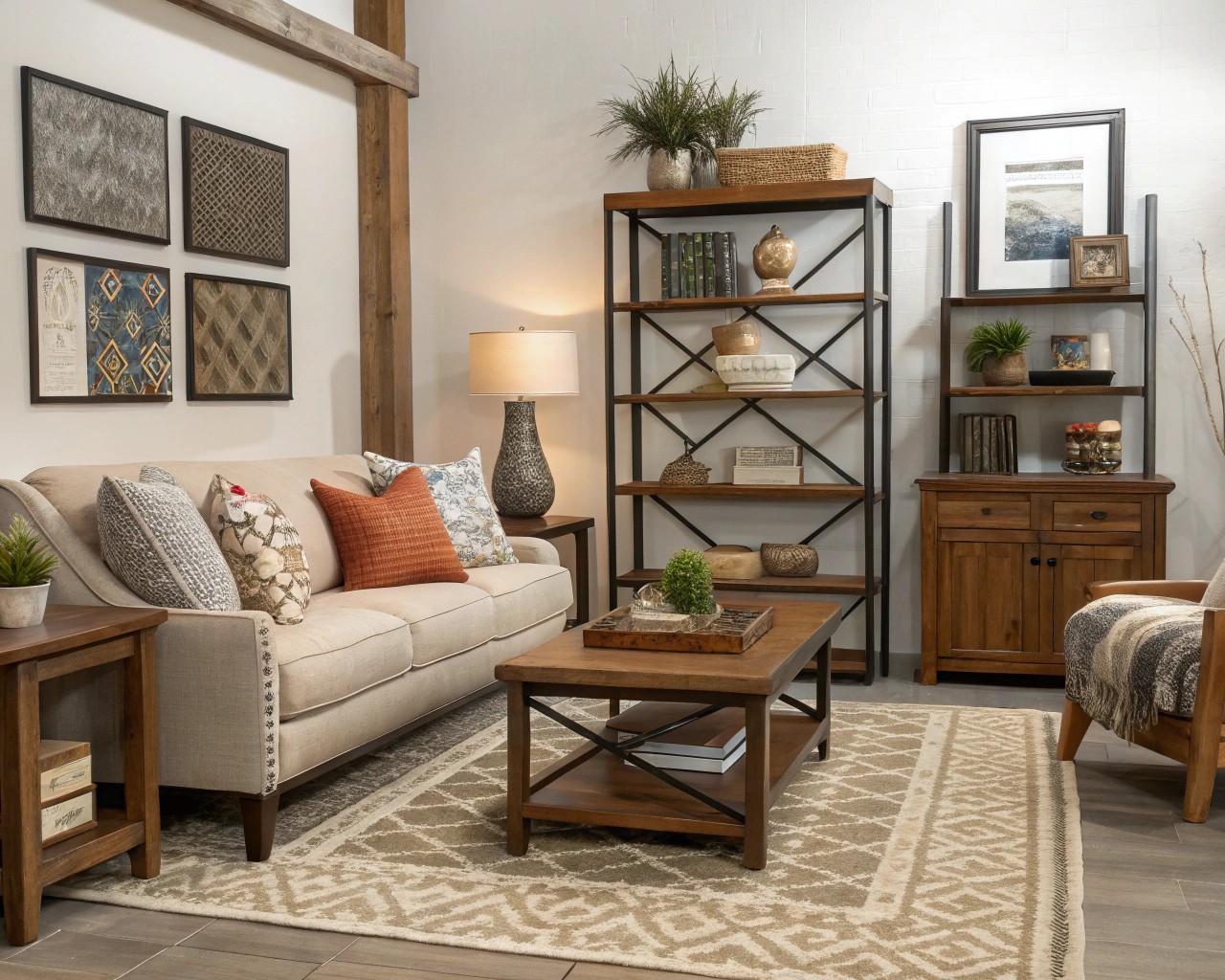
Like stanzas in a poem, atmospheric design builds meaning through careful layering. Each layer contributes to the overall emotional impact while maintaining individual significance.
Essential Atmospheric Layers:
Foundation Layer (Structure and Architecture)
– Room proportions and ceiling height
– Window placement and natural light access
– Built-in elements and architectural details
Functional Layer (Furniture and Layout)
– Traffic flow and spatial relationships
– Seating arrangements that encourage desired interactions
– Storage solutions that maintain visual clarity
Aesthetic Layer (Color, Pattern, and Texture)
– Wall treatments and floor coverings
– Fabric selections and window treatments
– Art and decorative objects
Sensory Layer (Light, Sound, and Scent)
– Lighting design and natural illumination
– Acoustic considerations and background ambiance
– Fragrance elements including plants and aromatics
Room-by-Room Poetic Applications
Living Spaces: The Heart’s Gathering Place
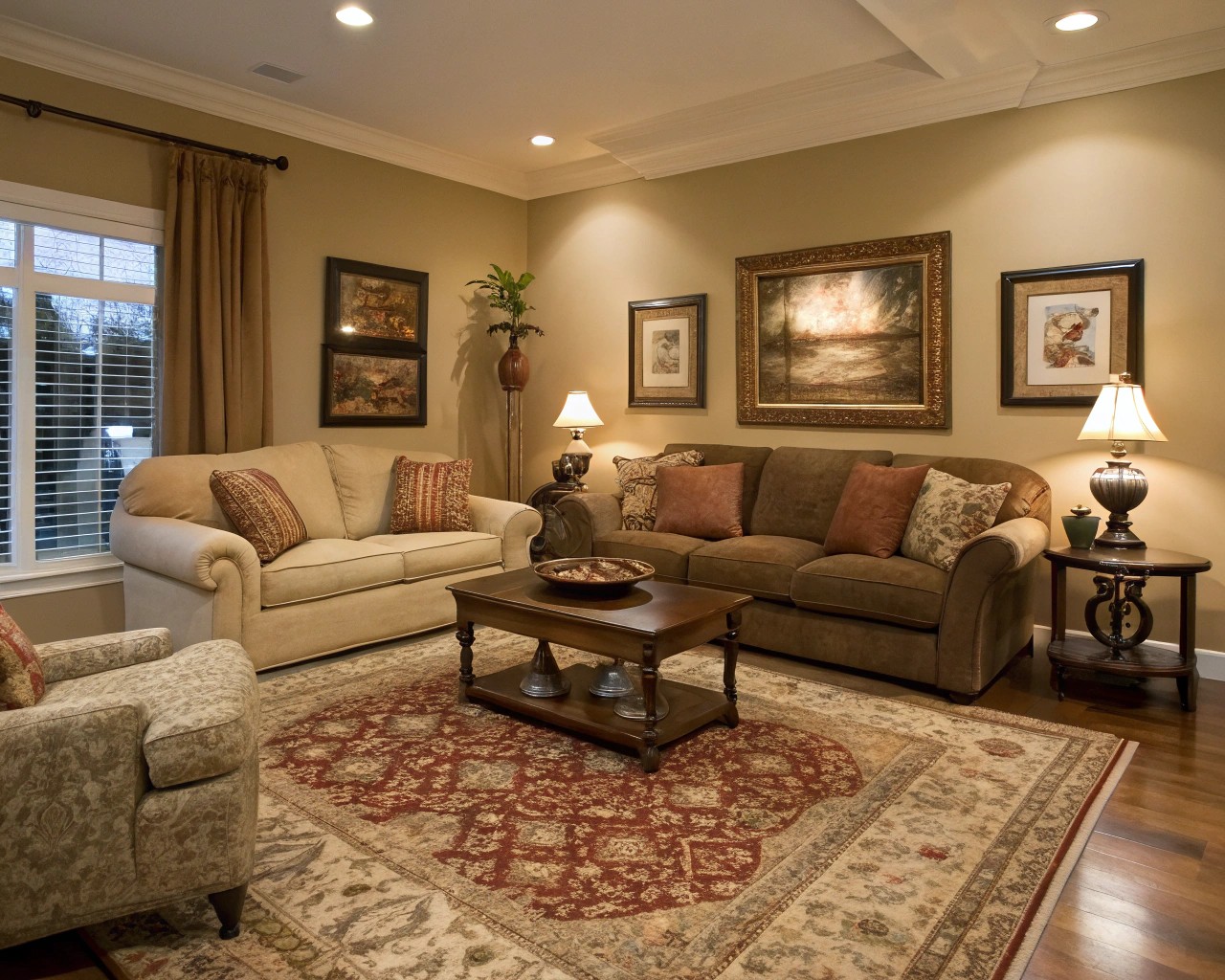
Transform your living room into a metaphorical hearth where connection and comfort reign. This central space should embody warmth, welcome, and authentic expression of your family’s personality.
Creating Conversational Intimacy:
- Arrange seating in a U-shape or circle to encourage interaction
- Position furniture away from walls to create more intimate groupings
- Use area rugs to define conversation zones within larger spaces
Lighting for Living Poetry:
- Combine multiple light sources at varying heights for visual interest
- Include table lamps on different surfaces to create pools of warm light
- Add dimmer controls to adjust atmosphere from energetic to contemplative
Textural Storytelling:
- Layer soft throws and varied pillow textures for tactile comfort
- Mix materials like wood, metal, and fabric to create visual depth
- Include living elements through plants or fresh flowers
Kitchen Spaces: The Nourishment Sanctuary
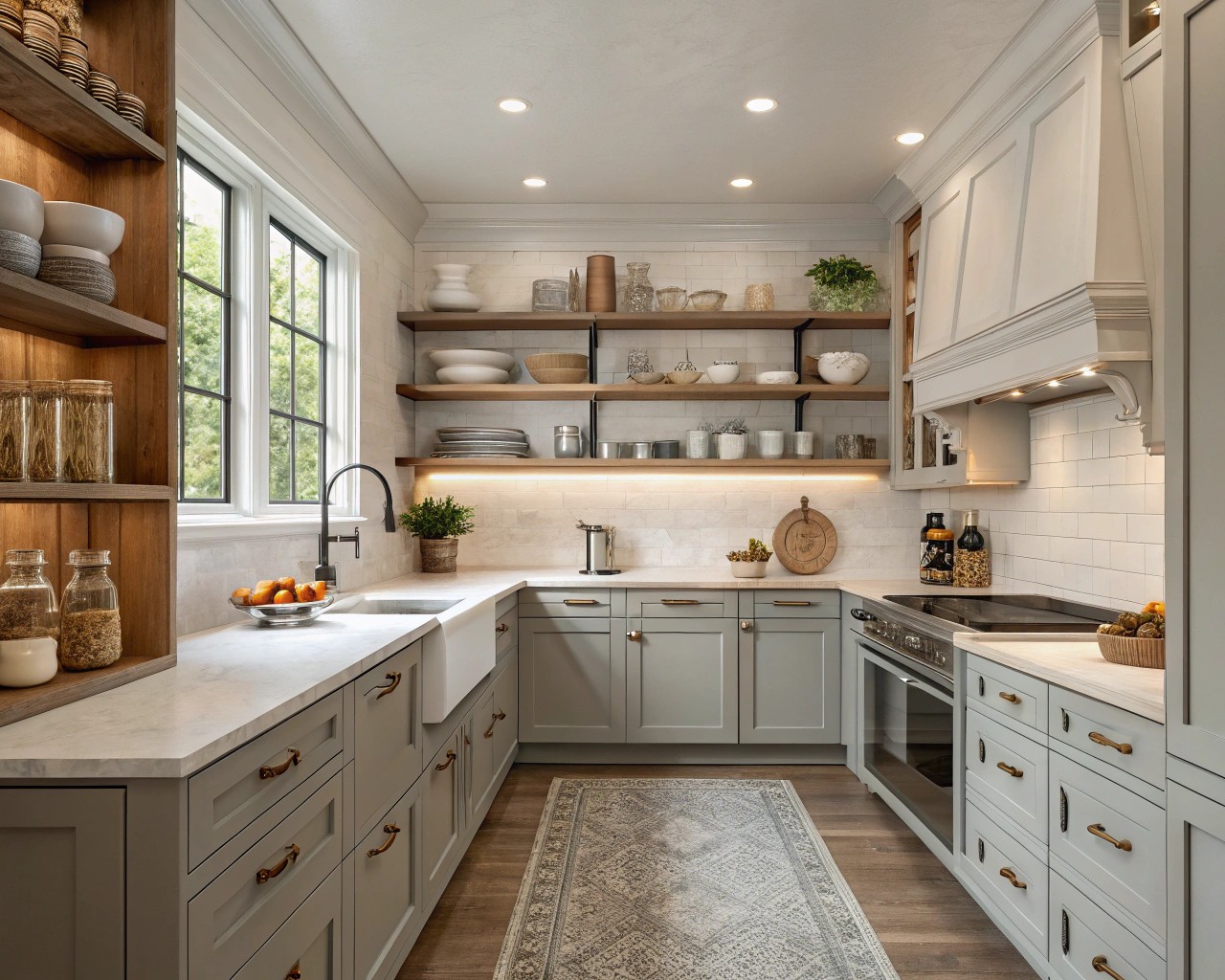
Approach kitchen design as a celebration of sustenance and creativity. This space should balance functional efficiency with emotional warmth, creating an environment that nourishes both body and spirit.
Essential Elements for Kitchen Poetry:
| Design Element | Practical Function | Emotional Impact | Implementation |
|---|---|---|---|
| Warm Task Lighting | Illuminates work surfaces | Creates inviting workspace | Under-cabinet LED strips, pendant lights over islands |
| Natural Materials | Durable, easy maintenance | Connects to earth elements | Wood cutting boards, stone counters, ceramic vessels |
| Display Storage | Easy access to tools | Shows personality through collections | Open shelving for beautiful dishes, spice displays |
| Herb Garden | Fresh ingredients | Living beauty and fragrance | Window boxes, countertop planters, hanging gardens |
Bedroom Retreats: The Restorative Haven

Design bedrooms as personal sanctuaries that support both rest and renewal. These intimate spaces should embody tranquility while reflecting individual personality and style preferences.
Creating Restorative Atmosphere:
- Use cool, muted colors to promote relaxation and sleep quality
- Incorporate soft, natural fabrics for bedding and window treatments
- Minimize visual clutter through concealed storage solutions
- Position seating to create a quiet reading or reflection area
Lighting for Rest and Romance:
- Install bedside lighting with warm, low-intensity bulbs
- Use blackout treatments to control natural light for better sleep
- Add accent lighting such as string lights or candles for ambiance
Garden Spaces: Living Poetry in Motion
Outdoor spaces offer unique opportunities to create poetic environments using nature’s own vocabulary. Gardens become three-dimensional poems where seasonal changes add temporal rhythm to spatial composition.
Designing Emotional Garden Rooms:
Contemplation Spaces:
- Create enclosed areas using hedging or screening plants
- Include seating positioned to take advantage of views or morning light
- Add water features for soothing sound and movement
Social Gathering Areas:
- Design level spaces large enough for outdoor furniture
- Provide overhead protection through pergolas or mature trees
- Plan lighting for evening entertaining and ambiance
Sensory Garden Elements:
- Choose plants for fragrance, texture, and seasonal interest
- Include herbs and edibles for engagement and utility
- Create pathways that encourage exploration and discovery
Practical Implementation Strategies
The 80/20 Design Approach
Apply the proven 80/20 rule to create balanced, cohesive spaces. Use 80% of your palette, furniture, and accessories in one dominant style or mood, with 20% dedicated to contrasting elements that add interest and personality.
This approach prevents spaces from feeling chaotic while still allowing for creative expression and evolving tastes.
Budget-Conscious Poetic Design
Creating atmospheric, meaningful spaces doesn’t require significant financial investment. Focus on elements that provide maximum emotional impact:
High-Impact, Low-Cost Changes:
- Paint walls in colors that support your chosen mood
- Rearrange furniture to improve traffic flow and conversation areas
- Add plants for living beauty and improved air quality
- Update lighting with warm-toned bulbs and table lamps
- Include personal collections and meaningful objects
Investment Priorities:
- Quality seating that provides both comfort and style
- Lighting fixtures that can be adjusted for different moods
- Window treatments that control light and provide privacy
- Storage solutions that maintain visual calm
Seasonal Mood Adjustments
Just as poetry adapts to different themes and occasions, your spaces can shift atmospherically with changing seasons and life circumstances. Develop systems for easy transformation:
- Interchangeable textiles for different seasonal moods
- Flexible lighting that adapts to shorter or longer days
- Seasonal plant displays that bring nature’s rhythms indoors
- Rotating art and accessories that reflect current inspirations
Sustaining Your Poetic Environment
The Evolution of Atmospheric Design
Like living poetry, your designed spaces should grow and adapt over time. Allow your environments to evolve with your changing needs, interests, and life circumstances while maintaining their essential emotional character.
Regular reflection and minor adjustments keep spaces feeling fresh and personally meaningful. Schedule seasonal reviews to assess what’s working well and what might benefit from poetic revision.
Maintenance as Mindful Practice
Caring for your poetically designed spaces becomes a form of meditation and creative expression. Approach maintenance tasks as opportunities to connect with your environment and refine your atmospheric intentions.
Daily practices that sustain poetic environments include:
- Decluttering surfaces to maintain visual calm
- Adjusting lighting throughout the day to support activities and moods
- Tending plants and refreshing floral arrangements
- Straightening and fluffing textiles to maintain comfort and beauty
Creating spaces that function as poetry requires both vision and commitment to the ongoing process of refinement. When we approach our environments with a poet’s sensitivity to nuance, metaphor, and emotional resonance, we transform houses into homes and gardens into sanctuaries that nourish our deepest human needs for beauty, meaning, and connection.


